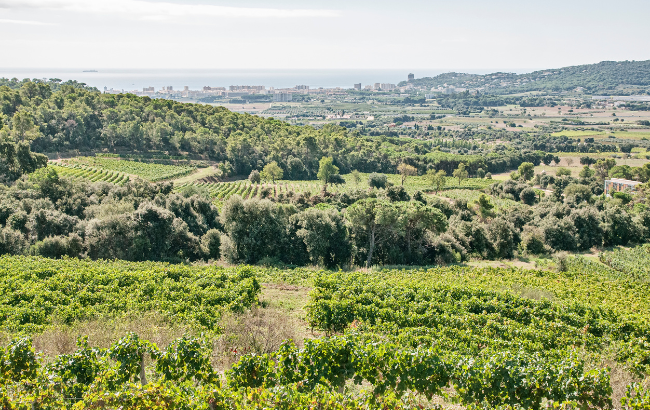Fine wine investment: what is ‘ex-cellar’ worth?
By Philip StaveleyWe pointed out last week that ex-château releases are only investable if they come at the right price, which is the market price, rather than any absurd premium. Several people have expressed surprise at this, which just goes to show how conditioned even sensible people can become.
There’s a really good investment book by Ken Fisher called ‘The Only Three Questions That Count‘ and in it he starts by asking the question: “What do you believe that is actually false?” All markets are awash with participants who believe things that are wrong, and in the fine wine investment world one of the erroneous beliefs is that there is something mystically superior about ex-château stock.
Let’s think about this for a moment, in reference perhaps to the Palmer 2006 release from a couple of weeks ago. The grapes were harvested in September/October 2006, made into wine, sat in vats from April/May 2007 to 2009, since which time they have nestled cosily at Château Palmer.
At the present time, buyers are being asked to pay a chunky premium to have it delivered to their storage site, in advance of drinking. When Neal Martin last tasted the wine in May 2016 he concluded that it had a drinking window of 2018-2040, so it will last a good while yet. Let me just say, we have no issue at all with the quality of the wine.
In truth, wine doesn’t much like being moved around. The reasons for this are that during transit it may spend time at inappropriate temperatures and humidities, and that it dislikes being shaken up. If wine stays in bond, which is the principal arrangement for investment, it should never spend time in an inhospitable environment. It will merely move from one bonded warehouse to another.
If it is shaken up, the particles within the wine are broken down at a faster rate than they would otherwise be, goes the science, and this is not optimal. This has the highly scientific name of ‘bottleshock’. The simple fact of that matter is, though, that bottleshock is not a permanent condition. After a few days, weeks, or, in the case of older wines, months, the wine regains its equilibrium. It is, in other words, as good as new. Or rather, old.
So who in their right mind would pay a premium for ex-château stock? You can imagine certain circumstances whereby in conversation, over a nice tasting, the issue may arise:
‘This is rather splendid old boy.’
‘Damn well should be. It’s ex-château you know.’
I mean, really?
Partner Content
From an investment perspective the issue simply doesn’t arise. Wines bought and sold for investment don’t eventually hit the wine list at a discount because they have changed hands several times over the years, and I have yet to see a wine list with an appendix for ex-château stock. I say this because it is the destiny of almost all wines to be drunk, either privately or in a restaurant, and a lot of the time when an investor sells he is simply feeding the consumption supply chain.
Having waded into Château Palmer last week we think we might address the balance by showing something from that producer which would be a very good buy. We mentioned that certain wines had underperformed the average over the period since the Brexit referendum, and Palmer 2009 is a perfect example.
On average, the Palmer vintages from 1996 to date have risen by 26%, led by the 2001 at 45% but interesting to note that the 2008 which we have favoured in the past is up 38%. The bargain of the group is undoubtedly the 2009, having risen merely 11.6%. Cross-referencing with the Amphora proprietary algorithm we find that the best relative value Palmers at present are the 2009, jointly with the 2011, which has only risen by 11.75%.
Of the two we would plump for the 2009, as we believe that this vintage, along with the 2010, is starting to shrug off its period of consolidation and underperformance, but clearly, depending on the balance of the portfolio, the 2011 might also come into consideration.
Another Super Second favourite, Cos d’Estournel, also throws up an opportunity. Looking at Cos from the algorithmic perspective first we find that 4 vintages score almost equally well, those being 2006, 2008, 2012, and 2014. These are up over the time frame by 23%, 32%, 7.7% and 22% respectively, against an average performance of 19%. On this basis the 2012 is the optimal selection.
Finally for this week an oft’ overlooked portfolio constituent, Château Pichon-Longueville Baron, otherwise known as Pichon Baron. Pichon Baron vintages have enjoyed an average price hike of 27%, yet the 2012, the second best relative value on the algorithm, is up a mere 15%. This makes it attractive. The only other consideration with this vintage is the price. At £750 it is right on the cusp of investability, from the perspective of return erosion through storage charges.
We wouldn’t be surprised to see a quick 10% rise in this case though, so as part of a Super Second weighting at this point it is worth a good look.
Philip Staveley is head of research at Amphora Portfolio Management. After a career in the City running emerging markets businesses for such investment banks as Merrill Lynch and Deutsche Bank he now heads up the fine wine investment research proposition with Amphora.





“Amphora proprietary algorithm”… marvelous!